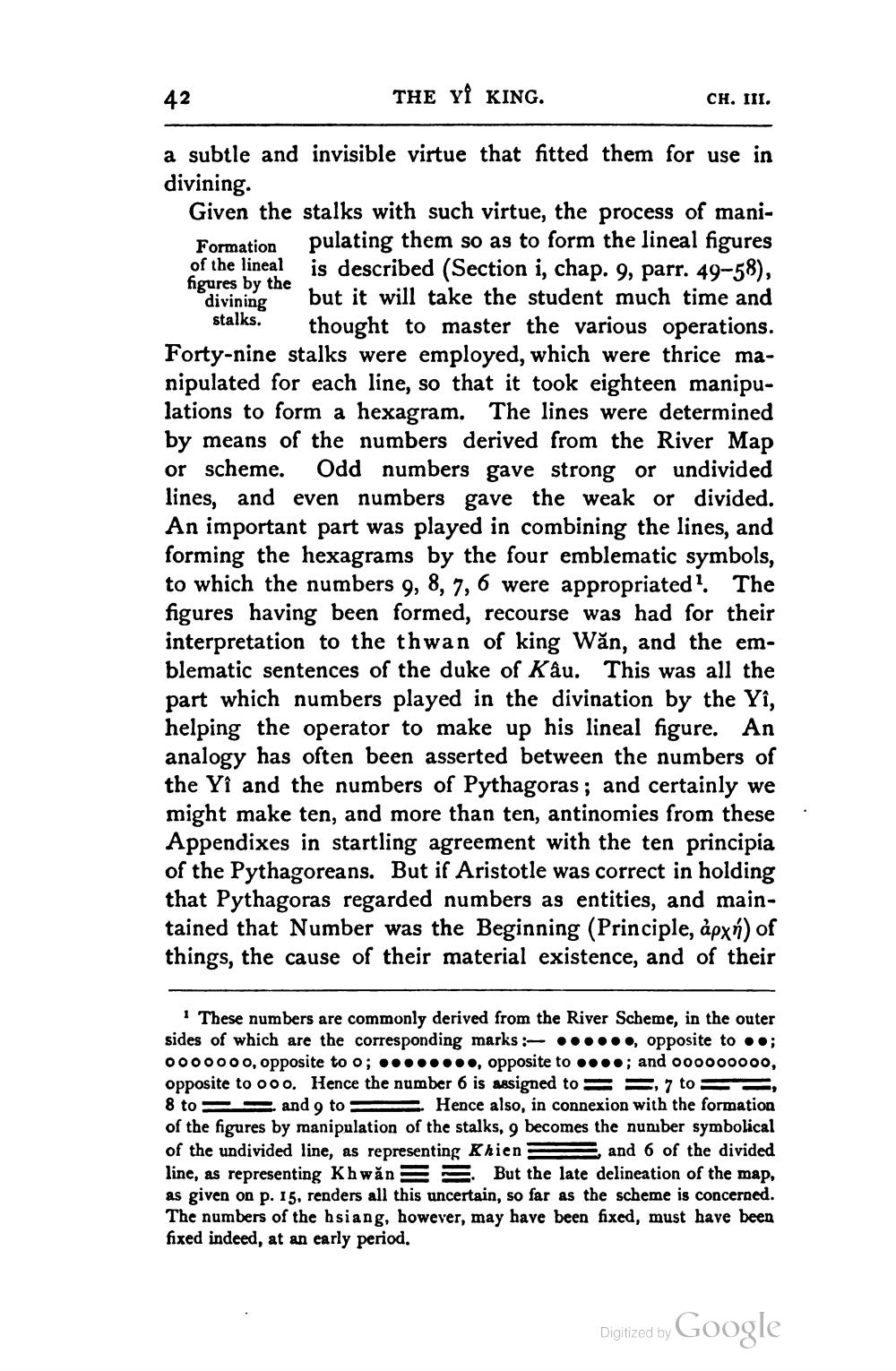________________
42
THE YI KING.
CH. III.
a subtle and invisible virtue that fitted them for use in divining Given the stalks with such virtue, the process of maniFormation pulating them so as to form the lineal figures of the lineal is described (Section i, chap. 9, parr. 49-58), figures by the divining but it will take the student much time and
stalks. thought to master the various operations. Forty-nine stalks were employed, which were thrice manipulated for each line, so that it took eighteen manipulations to form a hexagram. The lines were determined by means of the numbers derived from the River Map or scheme. Odd numbers gave strong or undivided lines, and even numbers gave the weak or divided. An important part was played in combining the lines, and forming the hexagrams by the four emblematic symbols, to which the numbers 9, 8, 7, 6 were appropriated? The figures having been formed, recourse was had for their interpretation to the thwan of king Wăn, and the emblematic sentences of the duke of Kâu. This was all the part which numbers played in the divination by the Yî, helping the operator to make up his lineal figure. An analogy has often been asserted between the numbers of the Yi and the numbers of Pythagoras; and certainly we might make ten, and more than ten, antinomies from these Appendixes in startling agreement with the ten principia of the Pythagoreans. But if Aristotle was correct in holding that Pythagoras regarded numbers as entities, and maintained that Number was the Beginning (Principle, åpxń) of things, the cause of their material existence, and of their
1 These numbers are commonly derived from the River Scheme, in the outer sides of which are the corresponding marks ......, opposite to ..; 0000000, opposite to o; .. ...., opposite to ....; and o00000000, opposite to ooo. Hence the number 6 is assigned to = = , 7 to 5 , 8 to = =.and 9 to : - Hence also, in connexion with the formation of the figures by manipulation of the stalks, 9 becomes the number symbolical of the undivided line, as representing Khien 5 and 6 of the divided line, as representing Khwăn = = But the late delineation of the map, as given on p. 15, renders all this uncertain, so far as the scheme is concerned. The numbers of the bsiang, however, may have been fixed, must have been fixed indeed, at an early period.
Digitized by Google




